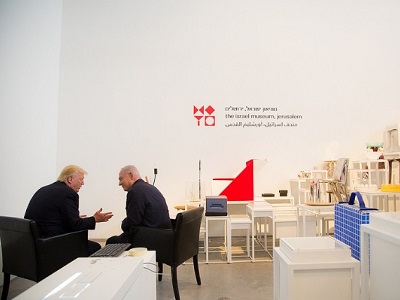What Lies Beneath: The US-Israeli Plot to ‘Save’ Gaza
PALESTINE ISRAEL GAZA GENOCIDE, 10 Sep 2018
Ramzy Baroud | Politics for the People – TRANSCEND Media Service
5 Sep 2018 – Israel wants to change the rules of the game entirely. With unconditional support from the Trump Administration, Tel Aviv sees a golden opportunity to redefine what has, for decades, constituted the legal and political foundation for the so-called ‘Palestinian-Israeli conflict.’
While US President Donald Trump’s foreign policy has, thus far, been erratic and unpredictable, his administration’s ‘vision’ in Israel and Palestine is systematic and unswerving. This consistency seems to be part of a larger vision aimed at liberating the ‘conflict’ from the confines of international law and even the old US-sponsored ‘peace process.’
Indeed, the new strategy has, so far, targeted the status of East Jerusalem as an Occupied Palestinian city, and the Right of Return for Palestinian refugees. It aims to create a new reality in which Israel achieves its strategic goals while the rights of Palestinians are limited to mere humanitarian issues.
Unsurprisingly, Israel and the US are using the division between Palestinian factions, Fatah and Hamas, to their advantage. Fatah dominates the Palestinian Authority (PA) in Ramallah while Hamas controls besieged Gaza.
A carrot and a stick scenario are being applied in earnest. While, for years, Fatah received numerous financial and political perks from Washington, Hamas subsisted in isolation under a permanent siege and protracted state of war. It seems that the Trump Administration – under the auspices of Trump’s senior adviser and son-in-law, Jared Kushner – are turning the tables.
The reason that the PA is no longer the ‘moderate’ Palestinian leadership it used to be in Washington’s ever self-serving agenda is that Mahmoud Abbas has decided to boycott Washington in response to the latter’s recognition of all of Jerusalem as Israel’s capital. True, Abbas’ subservience has been successfully tested in the past but, under the new administration, the US demands complete ‘respect’, thus total obedience.
Hamas, which is locked in Gaza between closed borders from every direction, has been engaging Israel indirectly through Egyptian and Qatari mediation. That engagement has, so far, resulted in a short-term truce, while a long-term ceasefire is still being discussed.
The latest development on that front was the visit by Kushner, accompanied with Middle East envoy, Jason Greenblatt, to Qatar on August 22. There, Gaza was the main topic on the agenda.
So, why is Gaza, which has been isolated (even by the PA itself) suddenly the new gate through which the top US, Israeli and regional officials are using to reactivate Middle East diplomacy?
Ironically, the suffocation of Gaza is particularly intense these days. The entire Gaza Strip is sinking deeper in its burgeoning humanitarian crisis, with August being one of the most grueling months.
A series of US financial aid cuts have targeted the very socio-economic infrastructure that allowed Gaza to carry on, despite extreme poverty and the ongoing economic blockade.
On August 31, Foreign Policy magazine reported that the US administration is in the process of denying the UN Palestinian refugees agency, UNRWA – which has already suffered massive US cuts since January – of all funds. Now the organization’s future is in grave peril.
The worrying news came only one week after another announcement, in which the US decided to cut nearly all aid allocated to Palestinians this year – $200 million, mostly funds spent on development projects in the West Bank and humanitarian aid to Gaza.
So why would the US manufacture a significant humanitarian crisis in Gaza – which suits the right-wing government of Benjamin Netanyahu well – while, simultaneously, engaging in discussions regarding the urgent need to end Gaza’s humanitarian woes?
The answer lies in the need for the US to manipulate aid to Palestinians to exact political concessions for Israel’s sake.
Months before rounds of Egyptian-sponsored indirect talks began between Israel and Hamas, there has been an unmistakable shift in Israeli and US attitudes regarding the future of Gaza:
On January 31, Israel presented to a high-level conference in Brussels ‘humanitarian assistance plans’ for Gaza at a proposed cost of $1 billion. The plan focuses mostly on water distillation, electricity, gas infrastructure and upgrading the joint industrial zone at the Erez crossing between Gaza and Israel. In essence, the Israeli plan is now the core discussion about the proposed long-term ceasefire.
The meeting was attended by Greenblatt, along with Kushner who is entrusted with implementing Trump’s unclear vision, inappropriately termed ‘the deal of the century.’
Two months later, Kushner hosted top officials from 19 countries to discuss the humanitarian crisis in Gaza.
There is a common thread between all of these activities.
Since the US decided to defy international law and move its embassy from Tel Aviv to Jerusalem last December, it has been in search of a new strategy that will circumvent the PA in Ramallah.
PA President, Abbas, whose political apparatus is mostly reliant on ‘security coordination’ with Israel, US political validation and financial handouts, has little with which to bargain.
Hamas has relatively greater political capital – as it has operated with less dependency on the Israeli-US-western camp. But years of relentless siege, interrupted by massive, deadly Israeli wars, have propelled Gaza into a permanent humanitarian crisis.
While a temporary truce between Israel and Hamas-led Palestinian groups in Gaza went into effect on August 15, a long-term ceasefire is still being negotiated. According to the Israeli daily ‘Haaretz’, citing Israeli officials, the truce would include a comprehensive ceasefire, opening all border crossings, expansion of the permitted fishing area off the Gaza coast, and the overhauling of Gaza’s destroyed economic infrastructure – among other stipulations.
Concurrently, Palestinian officials in Ramallah are fuming. ‘Chief negotiator,’ Saeb Erekat, accused Hamas of trying to “destroy the Palestinian national project,” by negotiating a separate agreement with Israel. The irony is that the Fatah-dominated Palestine Liberation Organization (PLO) and PA have done just that for over 25 years.
However, delinking the future of Gaza from the fate of all Palestinians can, indeed, lead to dangerous consequences.
Regardless of whether a permanent truce is achieved between Israel and the Hamas-led Gaza factions, the sad truth is that, whatever grand illusion is harbored by Washington and Tel Aviv at the moment, is almost entirely based on exploiting Palestinian divisions, for which the Palestinian leadership is to be wholly blamed.
___________________________________________
Ramzy Baroud is a journalist, author and editor of Palestine Chronicle. He has a Ph.D. in Palestine Studies from the University of Exeter and has been writing about the Middle East for over 20 years. Baroud is a Non-Resident Scholar at Orfalea Center for Global and International Studies, University of California Santa Barbara. His books include Searching Jenin, The Second Palestinian Intifada, and My Father Was a Freedom Fighter: Gaza’s Untold Story. His latest book is The Last Earth: A Palestinian Story (Pluto Press, London, 2018). His website: www.ramzybaroud.net. Email: info@ramzybaroud.net
Go to Original – ramzybaroud.net
JOIN THE BDS-BOYCOTT, DIVESTMENT, SANCTIONS CAMPAIGN TO PROTEST THE ISRAELI BARBARIC GENOCIDE OF PALESTINIANS IN GAZA.
DON'T BUY PRODUCTS WHOSE BARCODE STARTS WITH 729, WHICH INDICATES THAT IT IS PRODUCED IN ISRAEL. DO YOUR PART! MAKE A DIFFERENCE!
7 2 9: BOYCOTT FOR JUSTICE!
DISCLAIMER: The statements, views and opinions expressed in pieces republished here are solely those of the authors and do not necessarily represent those of TMS. In accordance with title 17 U.S.C. section 107, this material is distributed without profit to those who have expressed a prior interest in receiving the included information for research and educational purposes. TMS has no affiliation whatsoever with the originator of this article nor is TMS endorsed or sponsored by the originator. “GO TO ORIGINAL” links are provided as a convenience to our readers and allow for verification of authenticity. However, as originating pages are often updated by their originating host sites, the versions posted may not match the versions our readers view when clicking the “GO TO ORIGINAL” links. This site contains copyrighted material the use of which has not always been specifically authorized by the copyright owner. We are making such material available in our efforts to advance understanding of environmental, political, human rights, economic, democracy, scientific, and social justice issues, etc. We believe this constitutes a ‘fair use’ of any such copyrighted material as provided for in section 107 of the US Copyright Law. In accordance with Title 17 U.S.C. Section 107, the material on this site is distributed without profit to those who have expressed a prior interest in receiving the included information for research and educational purposes. For more information go to: http://www.law.cornell.edu/uscode/17/107.shtml. If you wish to use copyrighted material from this site for purposes of your own that go beyond ‘fair use’, you must obtain permission from the copyright owner.
Read more
Click here to go to the current weekly digest or pick another article:
PALESTINE ISRAEL GAZA GENOCIDE:

